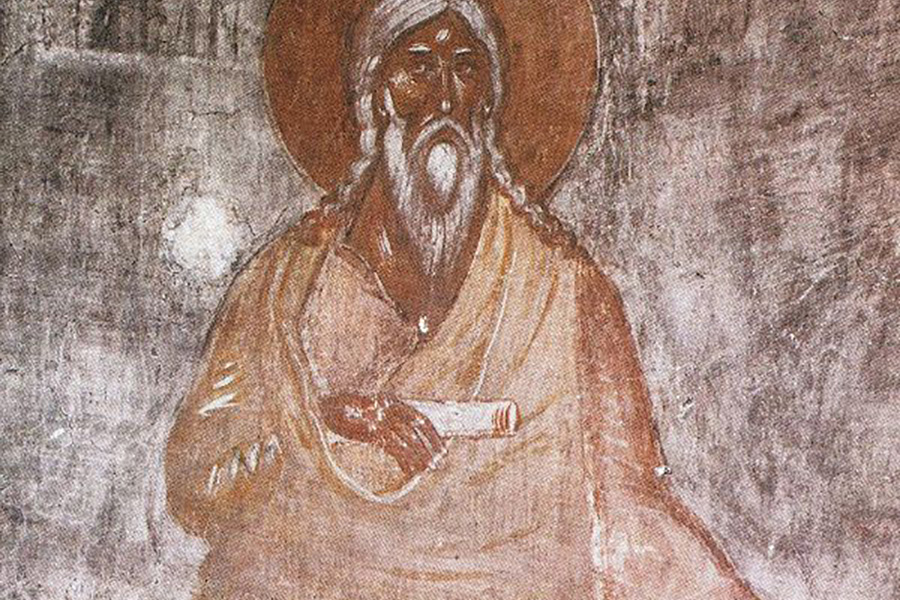The word shat (𐤔𐤕) or “Seth” is associated with two meanings. The first meaning is that of “buttocks” meaning the end or extremity of anything, especially the thicker, larger, or blunt end considered as a bottom, base, support, or handle, as of a log, fishing rod, or pistol.
The last association of the word is the set-apart 𐤁𐤍 (ban) of 𐤀𐤃𐤌 (Adam) and 𐤇𐤅𐤄 (Khauah) / 𐤇𐤉𐤄 (Khayah). His line was followers of the Most High, 𐤉𐤄𐤅𐤄 (Yahauah) / 𐤉𐤄𐤉𐤄 (Yahayah), compared to his older brother, 𐤒𐤉𐤍 (Qayan). Also, his name is spelled the same as the word representing sixth for numerical value. It is believed that his name is connected to 𐤔𐤉𐤕 (shayat) which means to appoint or to set, in his case, he was set apart.
The Paleo-Hebrew language or the original language of the Ābarayam is one spoken with an emphasis on the rauakh (breath, wind, spirit). With the language of the Ābarayam, each letter has a meaning and a number associated with it that adds meaning to each word they’re used with. Below you will be able to learn more about the letter in Ancient Hebrew, Yiddish Hebrew, Greek, and much more.
Letter Meanings
| Letter | Meaning |
|---|---|
| 𐤔 (sh) – sha | teeth, eat, consume, destroy, bite, two, change, divide, press, repeat Prefix: that, the fact that. Prefix: Used to introduce relative clauses; |
| 𐤕 (t) – ta | Mark, sign, covenant, signature, ID of people, places or things |
| Ābarayat Number | |
| Hebrew Gematria | |
| English Gematria | |
| Simple Gematria |
Based on the meaning of the letters the word could be defined as:
- “repeat a covenant”
- “consume a covenant”
- “destroy a covenant”
- “change a covenant”
- “divide a covenant”
Definitions for 𐤔𐤕 / shat
| Language | Word | Transliteration | Pronunciation | Definition |
|---|---|---|---|---|
| Ābarayat | 𐤔𐤕 | shat | shat | a son of Adam |
| English | Seth | Seth | seth | the third son of Adam. Genesis 4:25 |
| Hebrew | שֵׁת | Sheth | shayth | a son of Adam |
| Arabic | سيث | sayth | say-eth | Seth |
| Greek | Σήθ | Séth | sayth | Seth, third son of Adam. |
In the Beginning
When 𐤇𐤅𐤄 (Khauah) / 𐤇𐤉𐤄 (Khayah) names 𐤔𐤕 (Shat) she says, “God has appointed me another offspring”. [𐤁𐤓𐤀𐤔𐤉𐤕 (BaRaashayat) 4:25], and traditionally readers have understood that therefore the name must come from 𐤔𐤉𐤕 (shayat), but we cannot be 100% certain of this. It may be that the name is really the word meaning national foundation, but also identical to the word for buttocks. It is believed that he was appointed by The Most High as a replacement for 𐤄𐤁𐤋 (Habal).
According to the Book of 𐤁𐤓𐤀𐤔𐤉𐤕 (BaRaashayat), he was born when 𐤀𐤃𐤌 (Adam) was 130 years old. He was “a son in his likeness and image”. The genealogy is repeated in 𐤀 𐤃𐤁𐤓𐤉־𐤄𐤉𐤌𐤉𐤌 (1 Dabaray Ha-Yauamayam) 1:1–3. 𐤁𐤓𐤀𐤔𐤉𐤕 (BaRaashayat) 5:4–5 states that 𐤀𐤃𐤌 (Adam) fathered “sons and daughters” before his death at the age of 930 years old. According to 𐤁𐤓𐤀𐤔𐤉𐤕 (BaRaashayat), 𐤔𐤕 (Shat) lived to the age of 912.
Also, the Book of 𐤉𐤅𐤁𐤋 (Yauabal), states that in the year of 231 A.M., he marries his sister, 𐤀𐤑𐤅𐤓𐤄 (Atsauarah), who was four years younger than he was. In the year 235 A.M., she would give birth to 𐤀𐤍𐤅𐤔 (Anauash).
Genealogy
Images for 𐤔𐤕 / shat


Definitions for /
When adding the 𐤉 (yad) to the end of a word, it creates a possessive of the original word. It can either signify “my…” or identify a member of a nation. For example, 𐤏𐤁𐤓 (Ābar) is the progenitor, but 𐤏𐤁𐤓𐤉 (Ābaray) is the singular descendant of him also known as a Hebrew.
| Language | Word | Transliteration | Pronunciation | Definition |
|---|---|---|---|---|
| Ābarayat | ||||
| English | ||||
| Hebrew | ||||
| Arabic | ||||
| Greek |
Images for /


Definitions for /
When adding the 𐤌 (mayam) after the 𐤉 (yad) to the end of a word, it creates a plural of the original word. It can identify multiple members of a nation. For example, 𐤏𐤁𐤓 (Ābar) is the progenitor, but 𐤏𐤁𐤓𐤉𐤌 (Ābarayam) are the plural descendants of him also known as Hebrews.
| Language | Word | Transliteration | Pronunciation | Definition |
|---|---|---|---|---|
| Ābarayat | ||||
| English | ||||
| Hebrew | ||||
| Arabic | ||||
| Greek |
Images for /


Definitions for /
When adding the 𐤕 (tau) after the 𐤉 (yad) to the end of a word, it creates a plural of the original word. It identifies the language or a sign of a nation’s existence. For example, 𐤏𐤁𐤓 (Ābar) is the progenitor, but 𐤏𐤁𐤓𐤉𐤕 (Ābarayat) is the language of him also known as Paleo-Hebrew language.
| Language | Word | Transliteration | Pronunciation | Definition |
|---|---|---|---|---|
| Ābarayat | ||||
| English | ||||
| Hebrew | ||||
| Arabic | ||||
| Greek |
Images for /
| Character | Name | Transliteration | Pronunciation |
|---|---|---|---|
Classification
You can continue your studies of the words by viewing Strong’s entries for:


